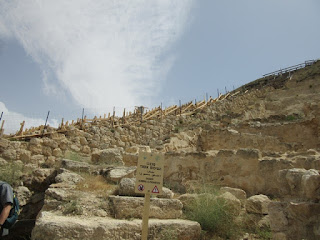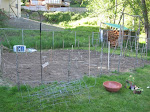The palace was elaborate and included several levels, gardens and a domed bathhouse.
The lower part was a small city containing administrative buildings, a theater, and a pool so large and deep it could have boats sail in it!
How did they get so much water in the middle of the Judean wilderness? An aquaduct brought the water from a spring nearly 4 miles away. There was an elaborate tunnel system in the lower levels of the palace. Slaves carried water up through the tunnels. In order to keep the location of the water a secret, slaves were killed at the end of the day. More tunnels were dug when rebels camped there and were under siege from 132-135.
a large cistern for holding water brought in by slaves
This was also the place where Herod chose to be buried after his death. Herod was powerful but also paranoid and violent. He killed many people he suspected of trying to overthrow him including some of his sons, one of his wives, in-laws, the baby boys in Bethlehem, and many others that were friends, family and foes. Knowing that no one would mourn his death, he imprisoned many notable Judean men and order the execution on the day of his death. The order was never carried out.
Herod's burial site remained a mystery until it was discovered during excavations at the site under the ruins of a 2-story mausoleum in 2007.
Used by rebels during two revolts, the Romans destroyed much of the palace. Later people used the toppled stones to build their own buildings. But some things still remain...




































No comments:
Post a Comment